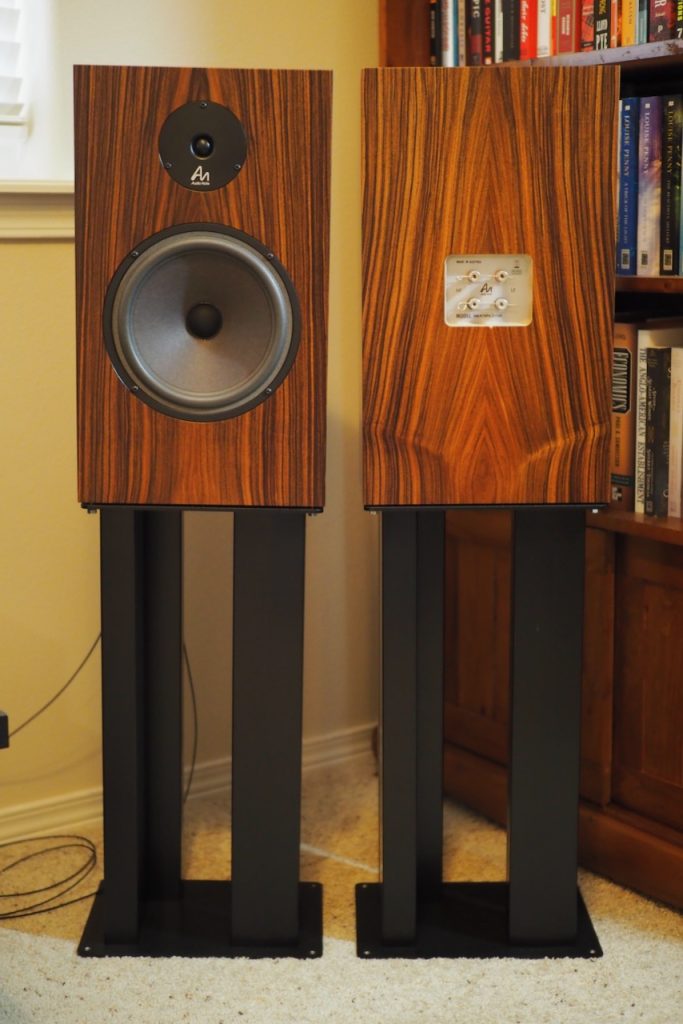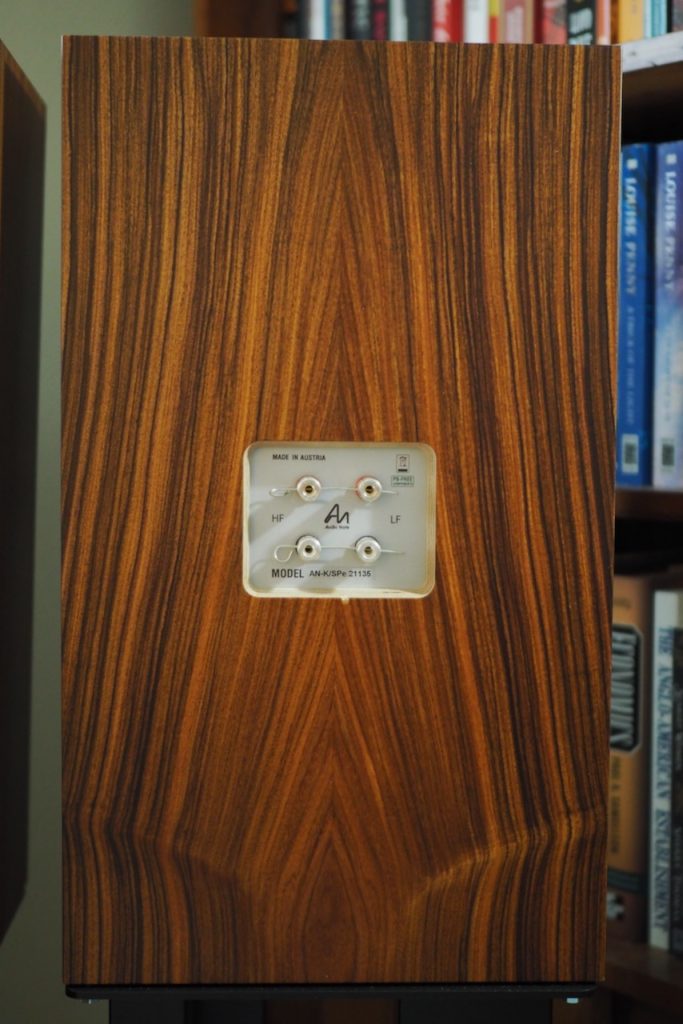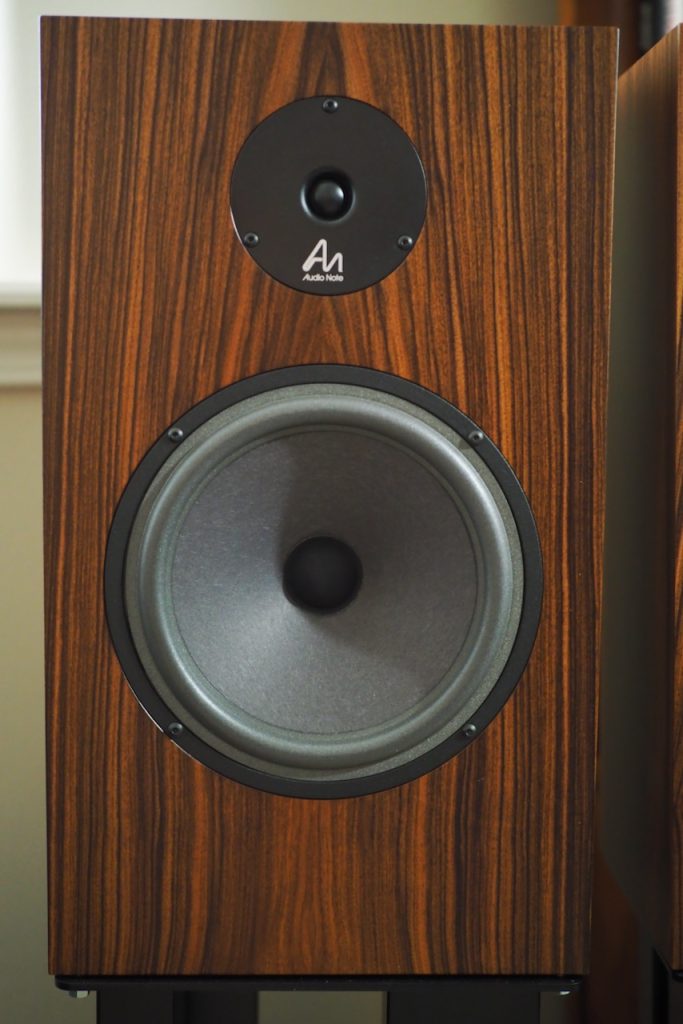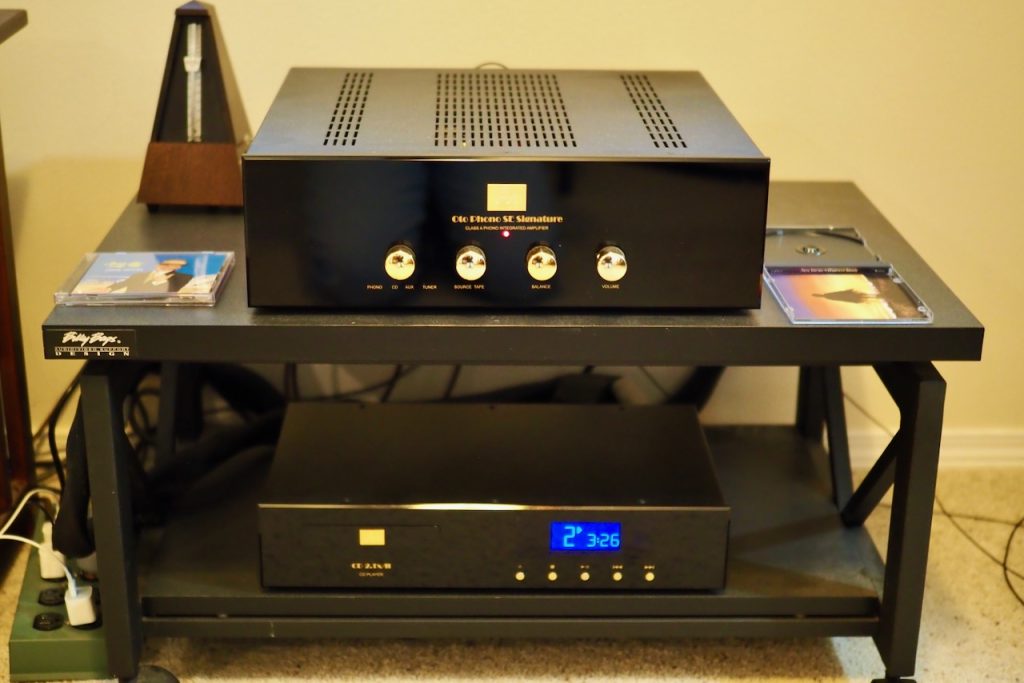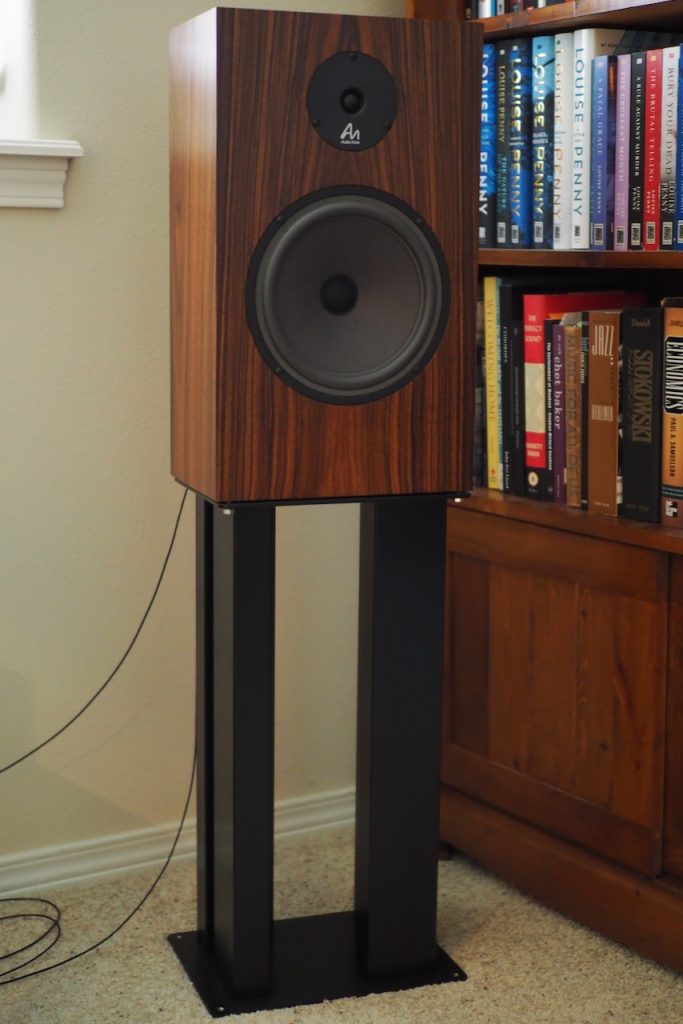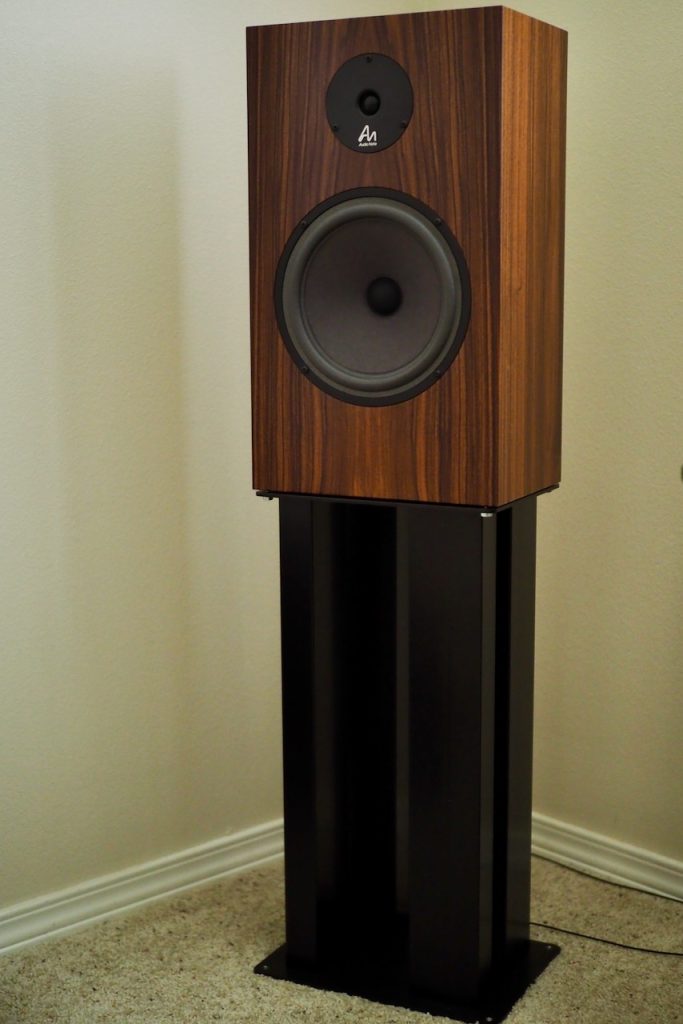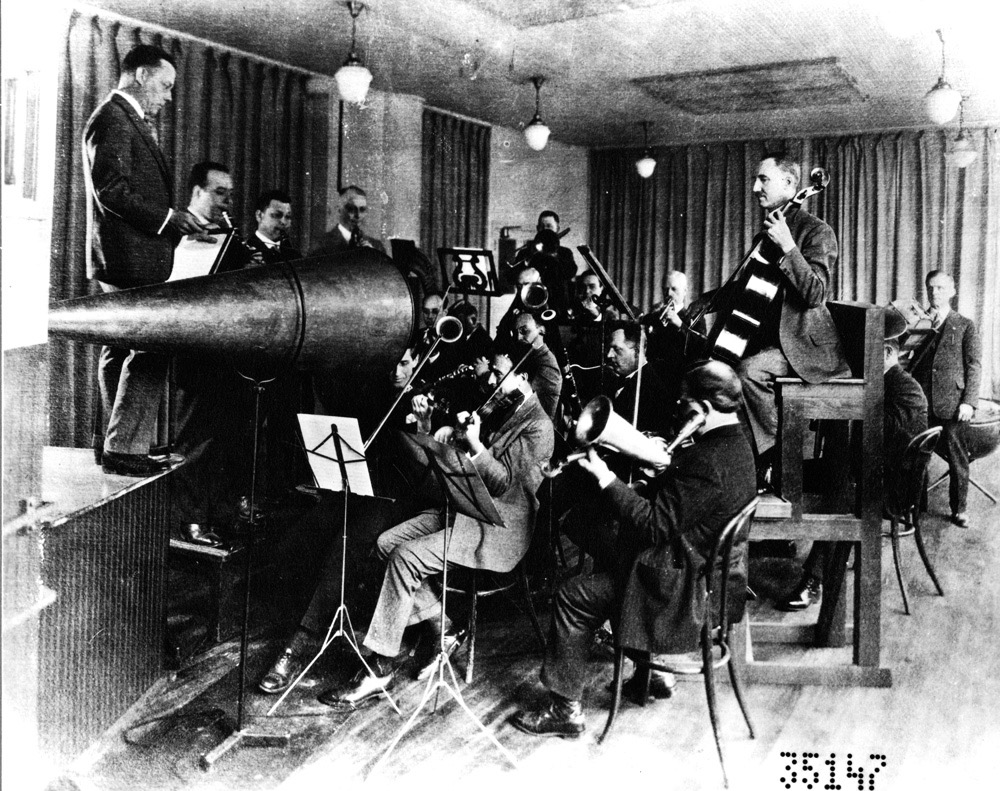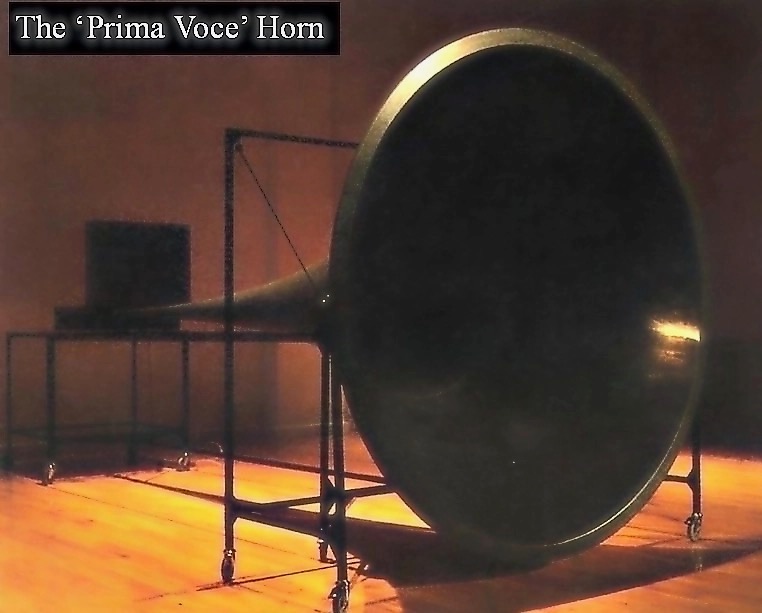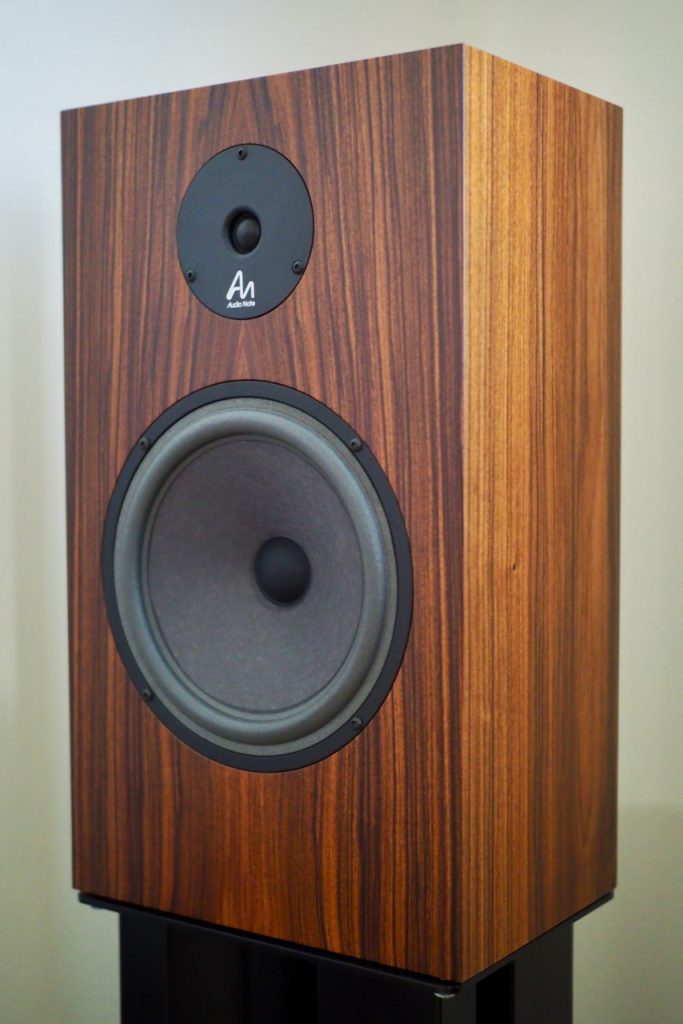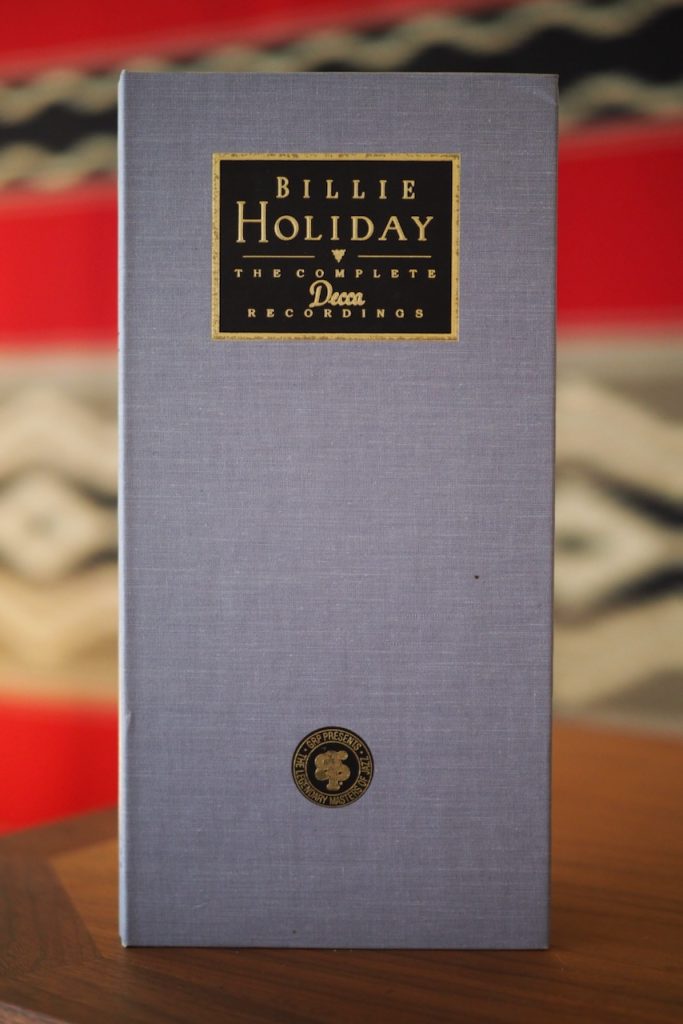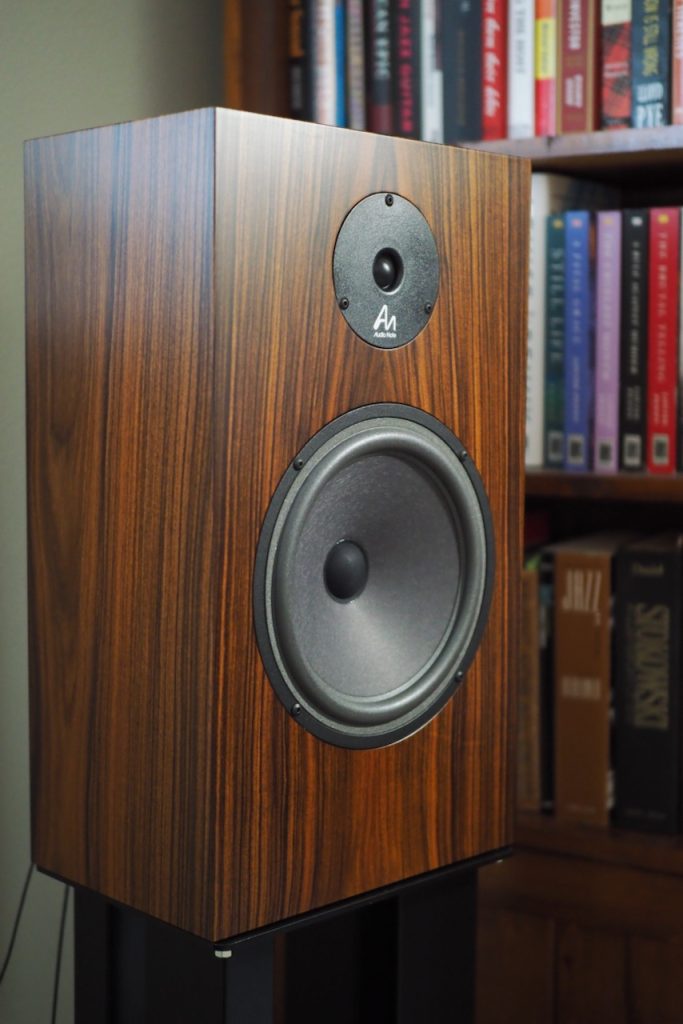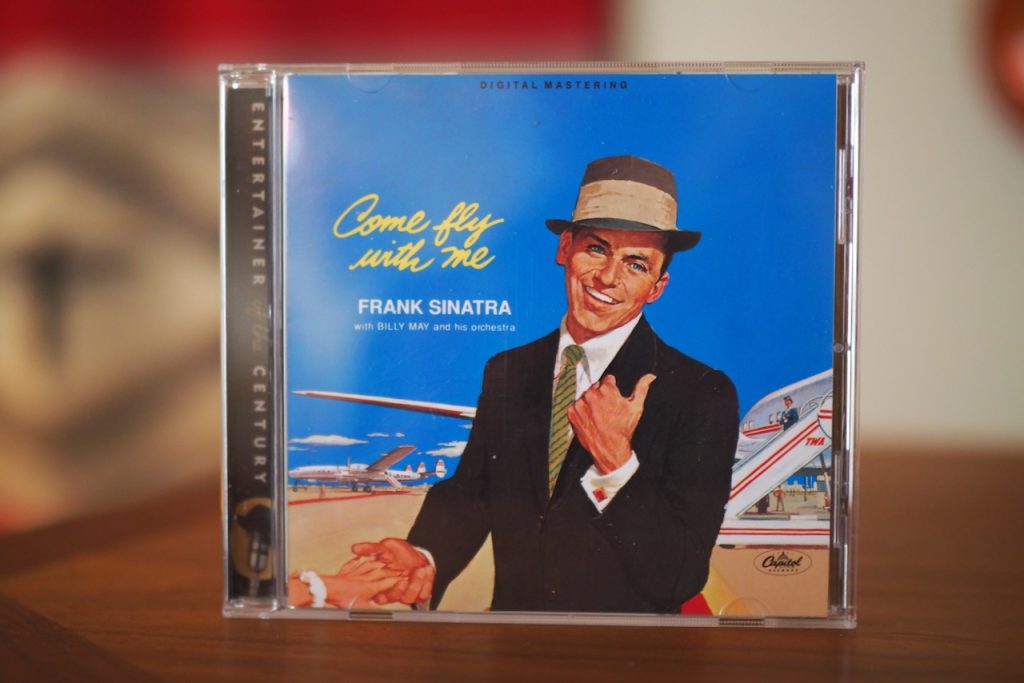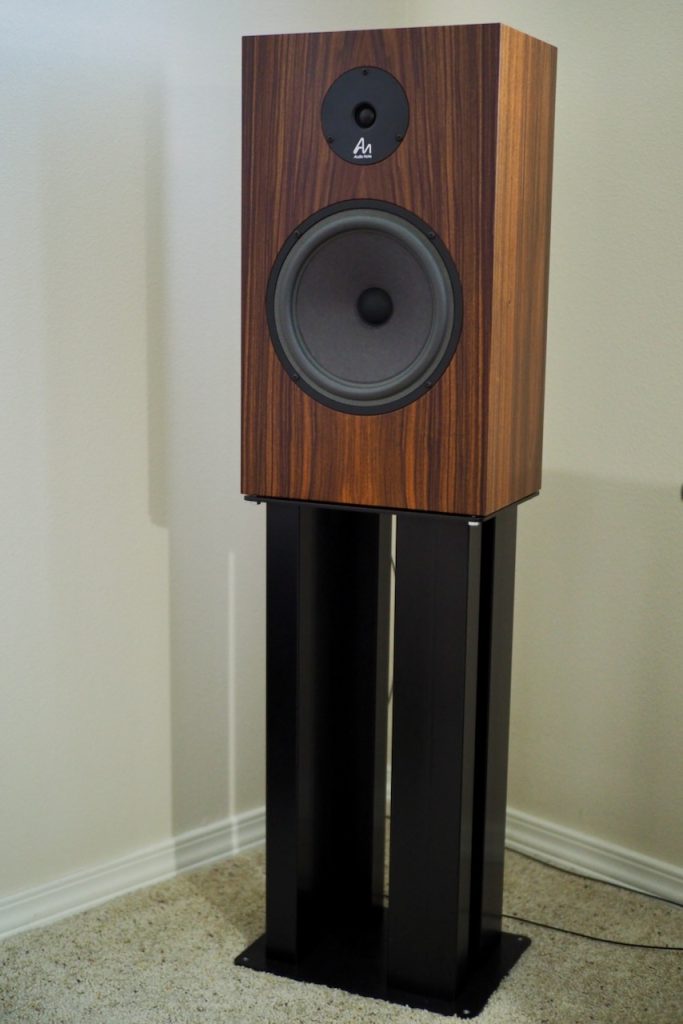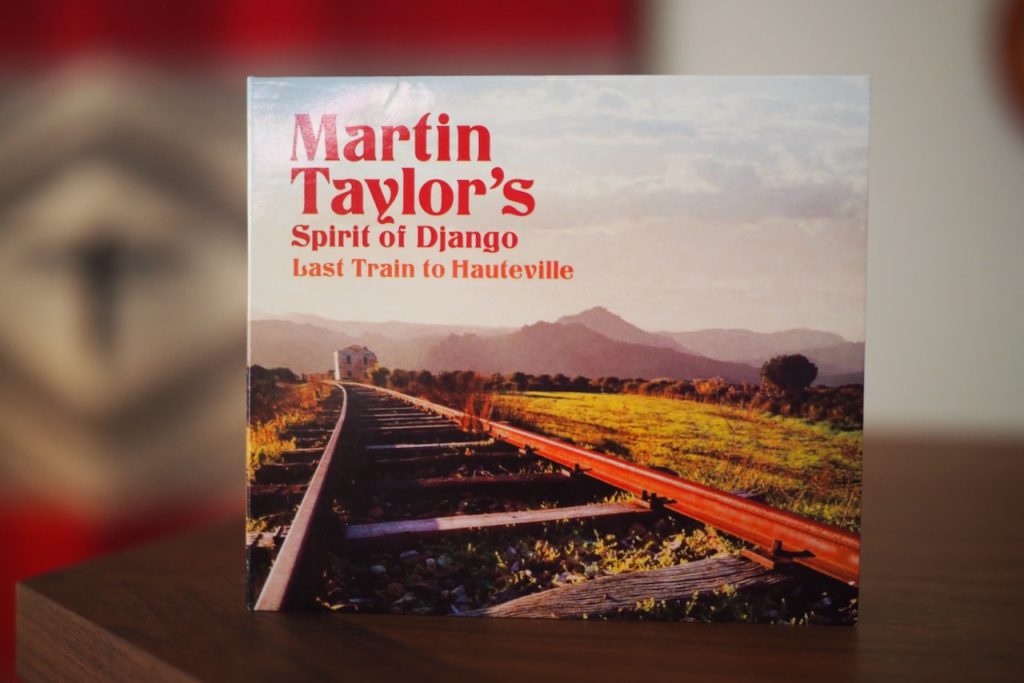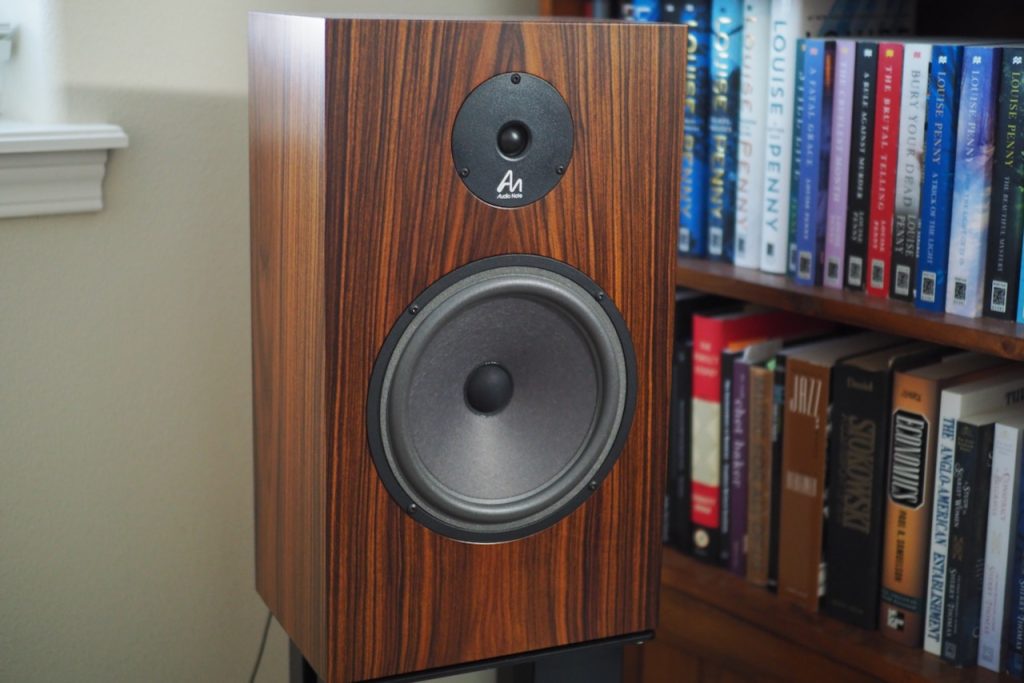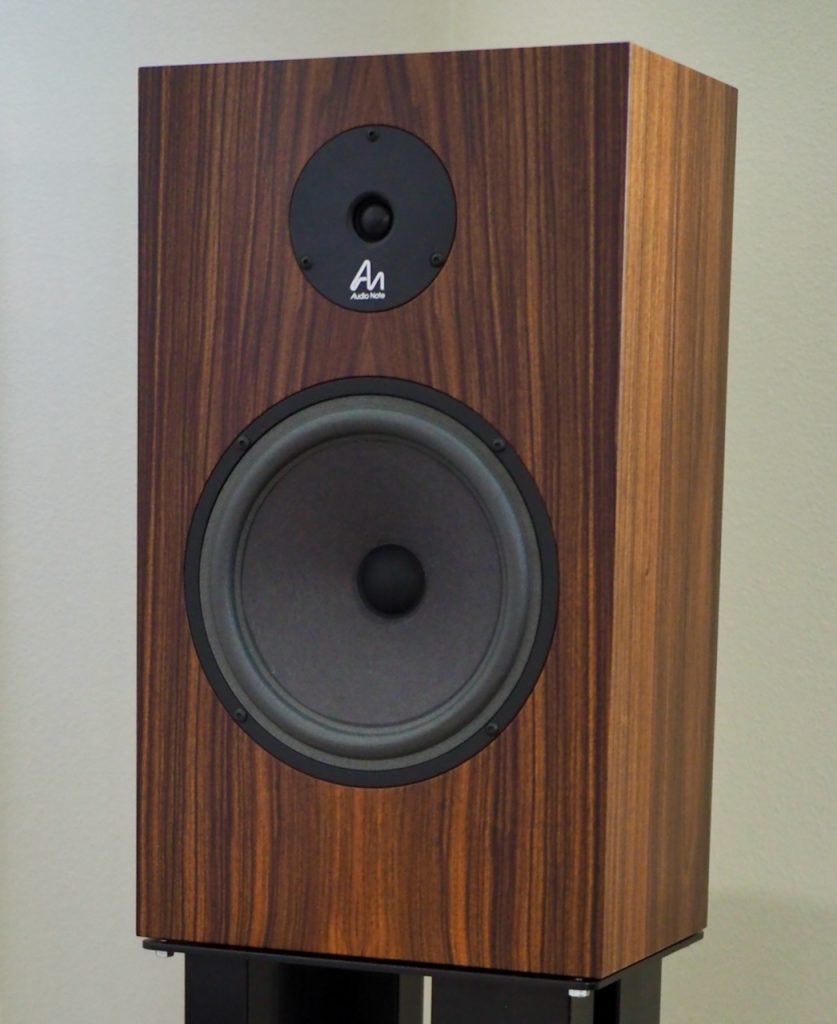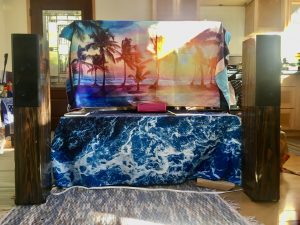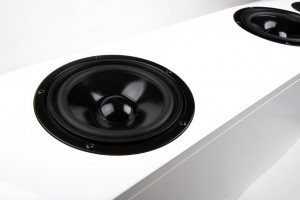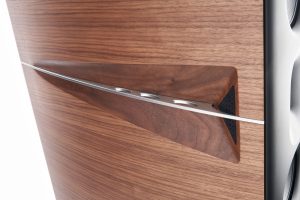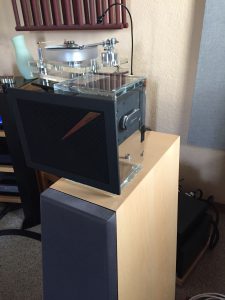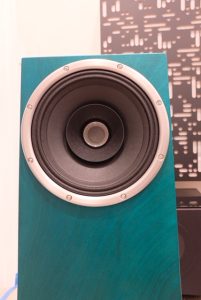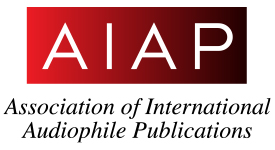Greeting friends, I hope you are doing well, and Happy Holidays to you!
Today's article is about the Audio Note (UK) AN-K/SPe compact high-performance stand-mounted loudspeakers ($5665 USD per pair HERE), along with their intended AN-K stands ($936 USD per pair HERE).
The Audio Note (UK) AN-K/SPe Loudspeakers
The Audio Note (UK) AN-K/SPe loudspeakers are premium high-performance stand-mounted loudspeakers whose highish sensitivity (90dB) allows them to be driven by lower-powered amplifiers of about 7-watts or so.
There are four models of the AN-K loudspeakers: the AN-K/D, AN-K/LX, AN-K/SPe (this article), and AN-K/SPx SE.
The basic differences between the models are that the AN-K/D version has combination chipboard and MDF cabinets with a black ash veneer, while the AN-K/LX, the AN-K/SPe, and the AN-K/SPx SE have Finnish birch ply cabinets with multiple choices of wood veneers.
The crossovers are first order, hardwired, with air-cored chokes, bipolar capacitors, and copper (or silver) foil polypropylene capacitors. The crossovers differ among the four models in the internal cabling, inductors, and capacitors choices.
For example, the AN-K/D, AN-K/LX, and AN-K/SPe all have copper inductors, while the AN-K/SPx SE have silver inductors. Also, the AN-K model designations reflect the type of internal cabling used, where the AN-K/D has AN-D internal copper cables, the AN-K/LX has AN-LEXUS-LX internal copper cables, the AN-K/SPe has AN-SPe internal silver cables, and the AN-K/SPx SE has AN-SPx internal silver cables.
The technical specifications for the AN-K/SPe are as follows: 6 Ohms impedance, frequency response of 50Hz to 20kHz (+/-6dB in room), with a minimum recommended amplifier power of 7-watts, and a maximum amplifier power of 150-watts.
There are four binding posts for loudspeaker cables, one pair for high-frequencies, and one pair for low-frequencies, for those who wish to bi-wire or bi-amp the loudspeakers. Silver wire jumpers are supplied for those who prefer to use only a single pair of loudspeaker cables.
The AN-K/SPe loudspeakers feature a 3/4-inch tweeter, an 8-inch paper driver with copper voice coils, internal SPe silver cabling, copper inductors in the crossover, birch ply cabinets, and a choice of a variety of fine veneers (more about veneers HERE).
The AN-K/SPe loudspeakers Peter Qvortrup sent to me to write about were finished in beautiful satin-finished palisander (rosewood) book-matched veneers. The fit and finish of the loudspeakers were impeccable.
The loudspeakers dimensions are approximately 18 3/4 inches high, 10 3/4 inches wide, and 7 1/2 inches deep, and with each loudspeaker weighing in at 24.25 pounds (11Kg).
The design of the loudspeakers were based on the original Snell K loudspeakers designed by Peter Snell in 1983. However, the AN-K's design was optimized to perform at their best in room boundary positions (i.e. room corners).
I asked Peter Qvortrup about optimizing the design of the AN-K loudspeakers for room boundary positioning:
"By having the transducers in a wide shallow cabinet, the dispersion is wide, and most importantly, very even, and as a result the first reflection is indistinguishable from the directly radiated sound when the speaker is placed close enough to the side walls of a corner.
Whilst the AN-K is not ported but an acoustic suspension, near wall or corner position still increases and linearizes the bass output."
From my own perspective as a hi-fi enthusiast, there are a few other benefits worth mentioning about loudspeakers designed for room boundary positioning, and in my own home, typically three out of four of my audio systems have loudspeakers optimized for room boundary positioning.
One major practical advantage of loudspeakers designed for room boundary positioning is that it maximizes living space, as the loudspeakers don't have to sit out in the middle of a room to work properly.
For those with smaller rooms, or for those who don't want the appearance of their rooms to be dominated by loudspeakers sitting out in the middle of a room, loudspeakers designed for room boundary positioning are ideal.
Another advantage of loudspeakers designed for room boundary placement is that it mostly takes deleterious room effects on sound quality out of the equation, so you don't have to worry about adding costly and unsightly room treatments to optimize loudspeaker performance.
I became aware of a third advantage of loudspeakers designed for room boundary placement during listening sessions for this review, one that will be particularly beneficial for those who like to listen to monaural recordings from early eras of the recording arts. More on this in a moment.
Review System
I'll be telling you about the AN-K/SPe loudspeakers performance in the context they were designed for, room boundary placement, in an Audio Note (UK) audio system.
The Oto Phono SE Signature 'Level Two' integrated amplifier (review HERE) was used for amplification duties, and the CD 2.1x/II 'Level Two' Red Book CD player was used as the source (review HERE), which is a representative combination of 'Level Two' components an Audio Note (UK) customer might choose for their audio system.
I suspect that Audio Note (UK) copper interconnects and speaker cables would be a typical match for this particular audio system. However, I didn't have the Audio Note (UK) copper cables here, so I pressed into service my usual Belden 8402 tinned-copper microphone cable interconnects and Duelund DCA16GA tinned-copper speaker cables as substitutes.
Instead of my usual larger primary music listening / living room where my Tannoy Westminster Royal SE loudspeakers reside, I installed this system into my smaller 'guitar room' where I practice my guitar. The room dimensions are approximately 11 feet wide by 11 feet deep by 9 feet high. My listening position was near the rear wall, at about 9.5 feet on the diagonal from the loudspeakers.
I thought this room would be a good "real room" environment for getting a feel for the room boundary design of the AN-K/SPe loudspeakers, and would be reasonably representative of the living space one might find in smaller apartments, or a smaller spare bedroom in a home.
After the loudspeakers were fully run-in at 100+ hours, I refined their positioning in the room corners to optimize their tonal balance, which for the right sidewall meant the room corner was formed by the intersection of a bookcase with the front wall of the room. Final positioning was about 9 inches out from the front wall, and 7 inches from the side walls.
I also experimented with the loudspeakers toe-in, ranging from the speakers facing straight ahead, to pointed directly at the listening position. I finally settled on a toe-in between those two positions, with the inner cabinet sidewalls being visible from the listening position, which I thought provided the most natural tonal balance.
Listening Impressions
Let's do a little music listening, shall we?
If you read the website description of the AN-K/SPe loudspeakers (HERE), you'll find that a major focus for their design was to preserve the inherent "life" and "emotion" aspects of recorded music, and relay that "living" essence from recordings to the music listener.
Given the design focus, one of my listening emphases was to listen to a wide variety of music genres, recorded across the four different eras of the recording arts (1877 to today), of necessarily varying fidelity, and evaluate how well the "life" and "emotion" were preserved and transmitted to me as a listener.
I'll get into some specific examples in a moment, but what I found broadly was that the AN-K/SPe loudspeakers have an impressive ability—just as their design focus implied - to preserve the sense of "life" and "emotion" of recorded music in such a way that made me feel like I was hearing any given album at its musical best, regardless of the fidelity of the recording.
It is a little bit tricky to articulate the "life" and "emotion" aspects of the AN-K/SPe loudspeakers performance, but I found when listening to albums recorded during the acoustic (1877 to 1925), electric (1925 to 1945), magnetic (1945 to 1975), and digital (1975 to today) eras of the recording arts, my most common response to whatever album I was playing, was "That's how I want that album to sound and feel."
The fully run-in pair of AN-K/SPe loudspeakers provided a musically involving presentation with an inviting relaxed clarity, a natural live-like presence of the music and musicians in my listening room, and an articulate dynamic prowess that made the music emotionally involving to listen to.
Generally speaking, as the recording arts evolved over time, the fidelity of the recordings improved.
Early mechanical direct-to-disc monaural recordings from the acoustic era had lower bandwidth, were generally noisier than recordings from the later eras, etc. Low-fidelity by today's recording standards.
Bandwidth and noise levels generally improved over the electric, magnetic, and digital eras of the recording arts, and the introduction of stereo recording during the 'magic magnetic era' of recording brought newfound levels of realism to the recordings, the best of which can be eerily life-like during listening sessions.
One of the AN-K/SPe loudspeakers most fascinating aspects of performance was that they were able to clearly articulate differences in fidelity, low to high, across the albums from different eras of the recording arts, while still presenting those recordings musical essence as emotionally engaging and full of life, thus making them very enjoyable and inspiring to listen to.
That playback virtuosity of being able to play albums across a low- to high-fidelity span of recording quality to deliver engaging listening experiences, is something that few loudspeakers—or audio systems—today are capable of consistently accomplishing, and was one of the AN-K/SPe loudspeakers major strengths, and most endearing attributes, making them particularly desirable for music lovers who don't want any playback barriers to exploring albums available in Planet Earth's vast recorded music canon.
I'm not quite sure how Audio Note (UK) accomplished that sort of broad-spectrum fidelity tolerance design-wise, and they didn't divulge any secrets about it when I asked about it, but I really liked that I could listen to any record album of any fidelity and feel like I was hearing it at its musical best.
Open source photo courtesy of the Library of Congress
Let's move on to a few specific listening examples. First we'll set our time travel machine to the year 1904, during the acoustic era of recording, when mechanical direct-to-disc monaural recordings were made through a recording horn with the musicians arrayed around it, and played back through a gramophone.
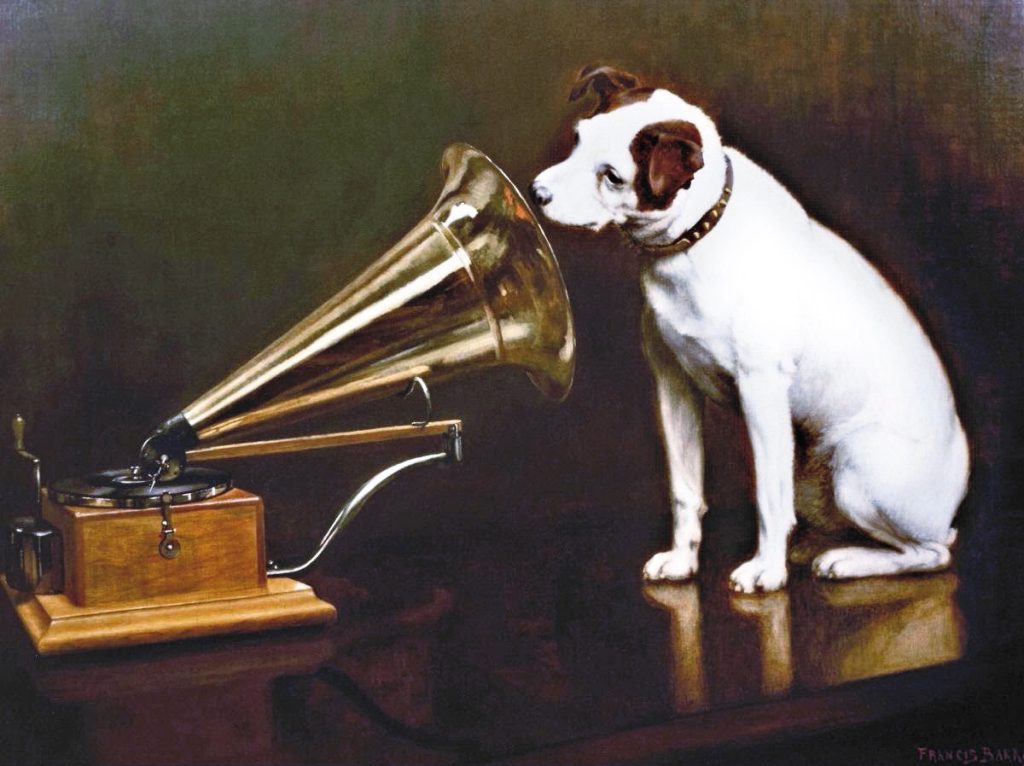 His Master's Voice, 1898 by Francis Barraud, public domain image courtesy of Wikipedia
His Master's Voice, 1898 by Francis Barraud, public domain image courtesy of Wikipedia
Early acoustic era recordings are considered low-fidelity by today's standards due to their limited bandwidth, the surface noise associated with the 78 records, etc., but they more than make up for it in terms of impressive musical performances by the superstars of the past who came early in the history of the recording arts.
There were a wide variety of musical genres and artists recorded during the acoustic era of recording, and one of my favorites to listen to is the great Italian operatic tenor Enrico Caruso, who passed away in 1921 at the age of 48, before the electric era of recording launched in 1925. If you want to hear the great Enrico Caruso, the way to do that is from recordings on 78rpm discs.
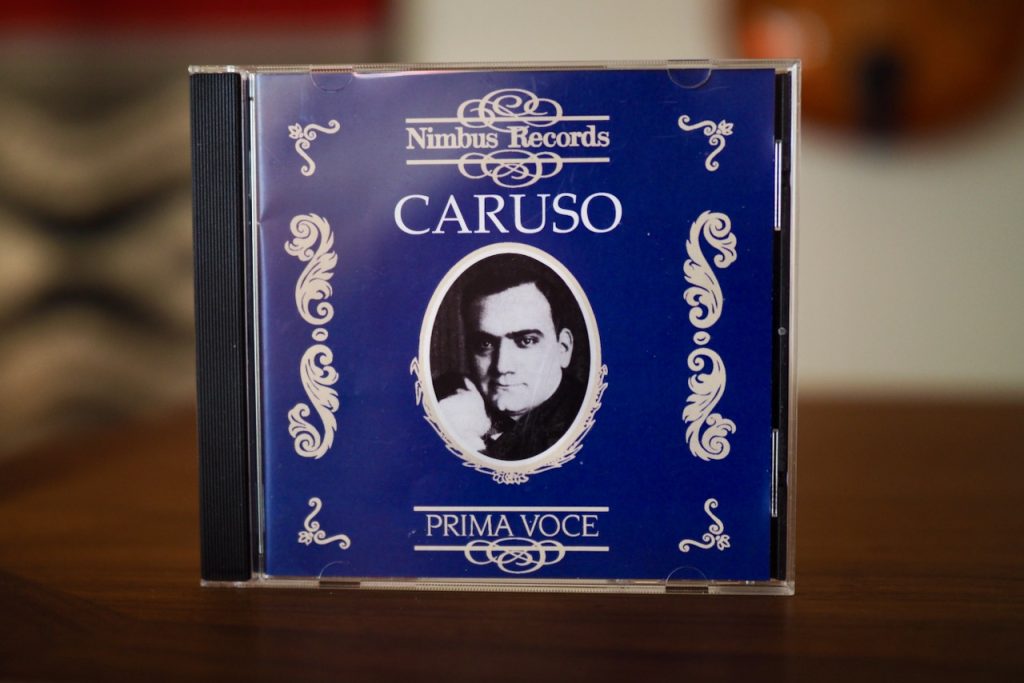
The Nimbus Records Prima Voce album Caruso (NI 7803) makes for a fun introduction to Enrico Caruso. Nimbus Records creates digital transfers from 78rpm records for use in their Prima Voce CDs, and in a rather unique way, in that the 78rpm 'source' records are played back over a large custom horn, and are re-recorded, rather than transferred directly by analog to digital conversion from the 78 records to a digital file.
Photo courtesy of Nimbus Records.
I think many listeners would be surprised at how good acoustic era recordings can sound through the AN-K/SPe loudspeakers, where the performances of Caruso were presented as naturally warm, spacious, vibrant, emotionally charged, and with a sort of purity of tone that really impressed me.
While 78rpm records from the acoustic era typically cover only the frequencies from about 100 to 2500Hz, and can be a bit noisy due to 78 source record surface noise, when listening to them through the AN-K/SPe loudspeakers Caruso's performances transcended the limitations of the acoustic recording era to deliver sublime listening sessions that kept me on the edge of my seat, thrilling me with their musical intensity.
The AN-K/SPe loudspeakers impressed me in terms of their dynamic prowess, the way they delivered a big spacious acoustic sense of recording sessions, their natural sounding tonality, and by producing a vivid image of Caruso in my listening room, which resulted in exciting and emotionally charged listening sessions.
Caruso is not the best example for soundstage width among acoustic era recordings, as there was minimal accompaniment to keep the focus on Caruso's remarkable vocals. On "Il Sogno," for example, there was a piano backing Caruso located in the soundstage behind him, in fighter pilot style, so the central image was fairly narrow. However, there was also a sort of a spacious room filling 'ambience' radiating from the recordings that extended sidewall-to-sidewall through the AN-K/SPe loudspeakers.
The aural images of Caruso, and the accompanying musical instruments, were surprisingly well defined given the age of the recordings, had a sense of acoustic space around them, and were vivid and dynamically expressive, which really connected me with the music.
The sound quality of those early acoustic era performances might be low-fidelity in contemporary terms, but they possess an emotional intensity and 'musical' fidelity that transcends their sound quality and makes for truly enjoyable listening sessions through the AN-K/SPe loudspeakers.
For those who enjoy listening to early acoustic era performances like I do, I think you would like to know that I found the AN-K/SPe loudspeakers made those early recordings remarkably accessible and enjoyable to listen to, and they let me know how truly great those acoustic era recording stars really were.
Let's engage in a little more time travel, and set our time machine to forty years into the future from Caruso's early recordings, to 1944.
I've come to cherish the early monaural Decca recordings of the great Billie Holiday, which were recorded towards the end of the electric era of recording in 1944, with some recordings falling into the early monaural period of the magnetic era of recording around 1950.
One of my favorite albums documenting those early Lady Day recordings is Billie Holiday, The Complete Decca Recordings, that was released as a two-disc CD set as part of GRP's "The Legendary Masters of Jazz" series. You can still find copies of this two-CD set from 1991 on Amazon and Discogs at very affordable prices.
Truly, these early Decca recordings of Billie Holiday are some of the most important and enduring recordings of Lady Day's performances in the history of jazz, and are recordings that I never seem to tire of hearing.
For this album, the recording sessions prior to 1949 were transferred from 16" vertical cut 33 1/3 rpm acetate 'safety' discs to digital tape by Steven Lasker on September 18, 1990. Decca started recording on magnetic tape in 1949, and for those sessions between August 17, 1949 and March 8, 1950, digital transfers from the 30 i.p.s. tape masters were used for this album.
There are recording limitations for some of these early monaural Decca recordings in terms of bandwidth and noise levels, but they more than make up for it in terms of how superbly they capture the emotional feel and drama of Billie Holiday's music.
I should mention that I found those early electric and magnetic era recording limitations to confer a sort of endearing charm to the recordings that I found to be really enjoyable, making me feel like I was taking part in historic listening sessions from the past, as I listened to Lady Day's music.
As with recordings from the acoustic era, the AN-K/SPe loudspeakers allowed those early monaural electric and magnetic era recordings of Billie Holiday to come alive with a naturally warm, spacious, vibrant, lifelike, and emotionally charged presentation of the music.
As I mentioned with the acoustic era recordings of Caruso, the AN-K/SPe loudspeakers impressed me with their ability to deliver a nice sense of soundstage ambience and imaging from vintage monaural recordings, but with the monaural Decca recordings of Lady Day, there was something else to hear—a wide soundstage with images arrayed across it.
We audiophiles normally associate the elements of imaging and soundstage width with the stereo magnetic and digital eras of the recording arts, but I think you might be surprised to find out—I was—that with the AN-K/SPe loudspeakers room boundary positioning I could hear a wide soundstage presentation from those old monaural Decca recordings of Lady Day that filled the entire span of my room, sidewall to sidewall.
What I often hear from loudspeakers designed for 'rule of thirds/fifths' placement in a room—to accentuate stereo soundstage and imaging recording cues for audiophiles - is that design approach results in a rather narrow central image between the loudspeakers from monaural recordings. That sort of soundstage width compression of monaural recordings can rob those grand old recordings of delivering their full potential in listening enjoyment.
In contrast, the AN-K/SPe loudspeakers room boundary placement design provided images arrayed across a wide soundstage from those ancient monaural recordings by Decca of Lady Day, with a soundstage width more like what I would normally associate with later stereo recordings, and which elevated the monaural recordings to another level of listening satisfaction compared to your usual audiophile-style loudspeakers.
On Billie Holiday, The Complete Decca Recordings, I heard a soundstage as wide as the positioning of the AN-K/SPe loudspeakers against the room sidewalls, and with images from those monaural recordings arrayed across that wide soundstage with a nice sense of ambient space around them.
The AN-K/SPe loudspeakers really flattered Billie Holiday's monaural era recordings by providing a much more immersive listening experience than is typical for audiophile-style loudspeakers, so those of you who enjoy listening to monaural recordings should take note.
If you are interested in listening to more of the great performances documented on monaural recordings from the acoustic, electric, or early magnetic eras of the recording arts, the AN-K/SPe loudspeakers make those early recordings not only more accessible, but a true source of musical inspiration that will let you know how great those early artists and recordings really were.
I'm relatively new to exploring the great monaural recordings of the past, but I find it astounding how much good music was recorded early in the recording arts, although many of those great monaural recordings have now faded from most listeners awareness.
Now let's set the dial on our time travel machine to 1957—65 years ago now—so we can listen to recordings from early in the stereo period of the magnetic era of the recording arts (1957 to 1975).
Come Fly With Me by Frank Sinatra was recorded in 1957 at the beginning of the stereo period of the magnetic recording era. As audiophiles know, 1957 marks the beginning of what would turn out to be a high point for high-fidelity magnetic era stereo recordings.
With Frank Sinatra's Come Fly With Me the AN-K/SPes loudspeakers natural tonal balance, well delineated dynamic gradations, and realistic presentation of tempo, beat, and melody, really delivered a lively and emotionally charged listening experience that I found to be very alluring.
The beginning of the stereo era of magnetic recording also marks the beginning of audiophiles fascination with the encoded stereo recording cues that accentuate soundstage and imaging characteristics, which can add additional live-like realism to the listening experience on the best stereo recordings.
Indeed, the AN-K/SPes ability to cast a wide and spacious soundstage, with vivid imaging presence, captured this aspect of magnetic era stereo recordings very well.
I found that the AN-K/SPe loudspeakers natural live-like musicality, emotion and drama filled presentation of the music, combined with their prowess in reproducing stereo recordings cues, to provide a very satisfying music listening experience, performance traits that I suspect will win the affections of both music lovers and audiophiles alike.
One of my favorite albums to listen to of late is one that my friend David Gitlen brought over for me to hear, jazz guitarist Martin Taylor's Last Train To Hauteville.
Recorded in 2010 during the digital era of the recording arts (1975 to the present), there is no indication whether this album was recorded in analog or digital, but either way, Andrew Tulloch mixed, mastered, and recorded Martin Taylor and his band Spirit of Django to perfection, which comes through fully while listening to the album, courtesy of the AN-K/SPe loudspeakers.
From a recording standpoint, Last Train To Hauteville sounded naturally warm, rich, vivid, and dimensional through the AN-K/SPe loudspeakers, and it was easy to imagine that Martin Taylor and the band Spirit of Django were transported into my listening room, so intimate, sensual, vivid, and engaging was the presentation of the music.
I might add that the recording quality of Last Train To Hauteville is at another level compared to that of Frank Sinatra's 1957 Come Fly With Me, which sounds middling-fidelity in comparison, and which the AN-K/SPe loudspeakers clearly revealed.
We may have entered into the 'magic magnetic era' of stereo recording in 1957, but listening to these two albums showed me that there was a lot more to be had in terms of sound quality and musicality as stereo recording evolved over time.
That reminds me of another point about the AN-K/SPe loudspeakers, which is that they are not only very adept at resolving the differences in the fidelity of recordings from the different eras, but they also manage to faithfully deliver the emotional 'feel' present in the performances, regardless of their recording quality, which is a particularly important point for those desiring to explore music from all eras of the recording arts.
Whether I was listening to opera, classical, funk, rhythm & blues, jazz, rock & roll, folk, pop, or whatever, the excitement, drama, and emotional impact of the music always came through first and foremost, regardless of the fidelity of the album being listened to.
The AN-K/SPe loudspeakers had an uncanny way of getting the musical "feel" of a recording right, which will delight both music lovers and audiophiles alike as they listen to and explore all kinds of music.
From a technical standpoint, I don't know exactly how Audio Note (UK) manages to accomplish such broadly desirable performance characteristics in the AN-K/SPe loudspeakers, but I'll say that it seems to me that the design intent is to deliver the maximum amount of recorded information from albums, coupled with an "artful voicing" that delivers the feeling and emotional content of the music exceptionally well.
Summary and Conclusions
If you follow the Audio Note (UK)'s posts on Facebook, you'll find that the vast majority of their posts are about music and musicians, rather than about their own audio products. They are really into music, all kinds of different music, from all of the eras of the recording arts.
Those broad musical tastes are reflected in the design prowess of the AN-K/SPe loudspeakers, which I found to be very adept at playing all kinds of music, of any fidelity, in a very satisfying and engaging way.
As per their design focus, the Audio Note (UK) AN-K/SPe loudspeakers unfailingly get the "life" and "emotion" aspects of the music right, which made me feel like I was hearing each album at its musical best.
Overall, I found the voicing of the AN-K/SPe loudspeakers to be one of a resolving relaxed clarity, a musically natural sounding warmth, a spacious and vivid presentation of the recorded music, along with an articulate dynamic prowess that made albums emotionally involving to listen to.
Some of us like to listen to the most well recorded audiophile albums, others like to listen to the greatest recorded musical performances (and fidelity be damned), some of us just enjoy exploring music we haven't heard before, and the AN-K/SPe loudspeakers made all of those pursuits exceptionally enjoyable for me.
One of the things that I've really been enjoying over the last few years has been exploring the great musical performances documented in monaural recordings from early in the history of the recording arts, those from the acoustic, electric, and the early monaural period of magnetic era recordings.
The AN-K/SPe loudspeakers room boundary design does a remarkably good job of getting the best from those early monaural recordings, presenting them with a surprisingly wide soundstage, and a naturally warm, spacious, vibrant, lifelike, and emotionally charged presentation of the music.
Typically, most audiophile-style loudspeakers I hear present a rather narrow central image from monaural recordings, but not so with the AN-K/SPe loudspeakers, which presented most monaural recordings as room filling and nuanced as stereo recordings.
The AN-K/SPe loudspeakers were equally impressive with stereo recordings, providing articulate dynamics, a big spacious acoustic of the recording venue, natural sounding tonality, and a vivid imaging presence of instruments and vocalists upon a wide soundstage.
The AN-K/SPe loudspeakers made whatever music I wanted to listen to accessible and enjoyable, and made me feel like I was hearing every album at its musical best, regardless of its recorded fidelity.
The Audio Note (UK) AN-K/SPe loudspeakers provided an extremely liberating listening experience, one that allowed me to reliably enjoy any music I wanted to listen to, and as such, have joined the short list of my all-time favorite loudspeakers. Highly recommended!
I would like to thank Peter Qvortrup for allowing me to listen to his AN-K/SPe loudspeakers and tell you about them here at Positive Feedback.
As always, thanks for stopping by, and may the tone be with you!
AN-K/SPe Loudspeakers
Retail: $5665/pair
AN-K Stands
Retail: $936
Audio Note (UK)




